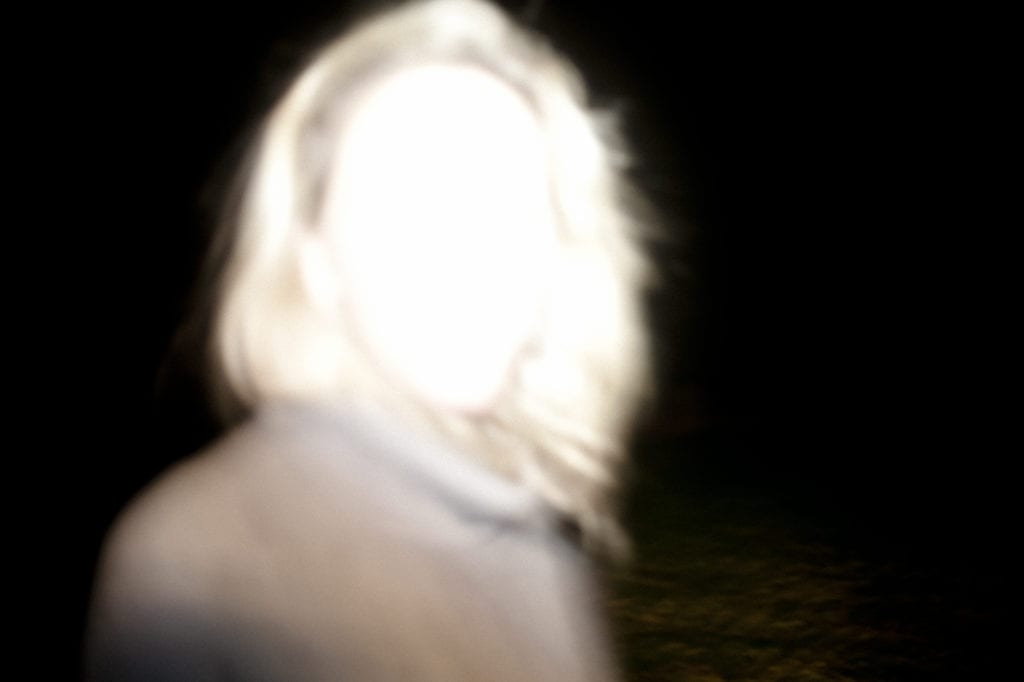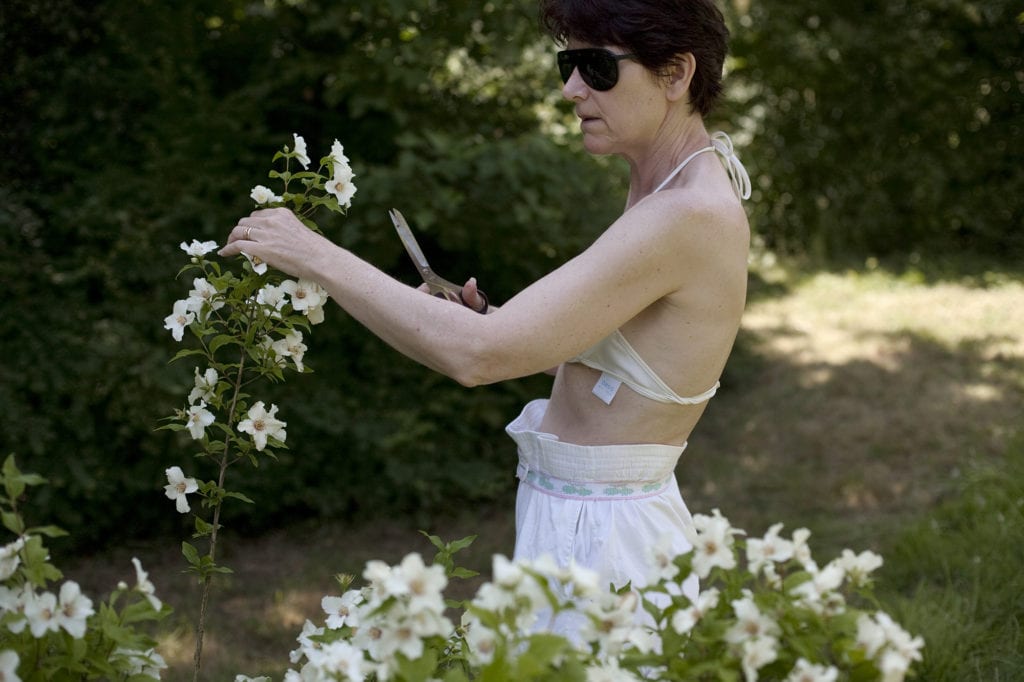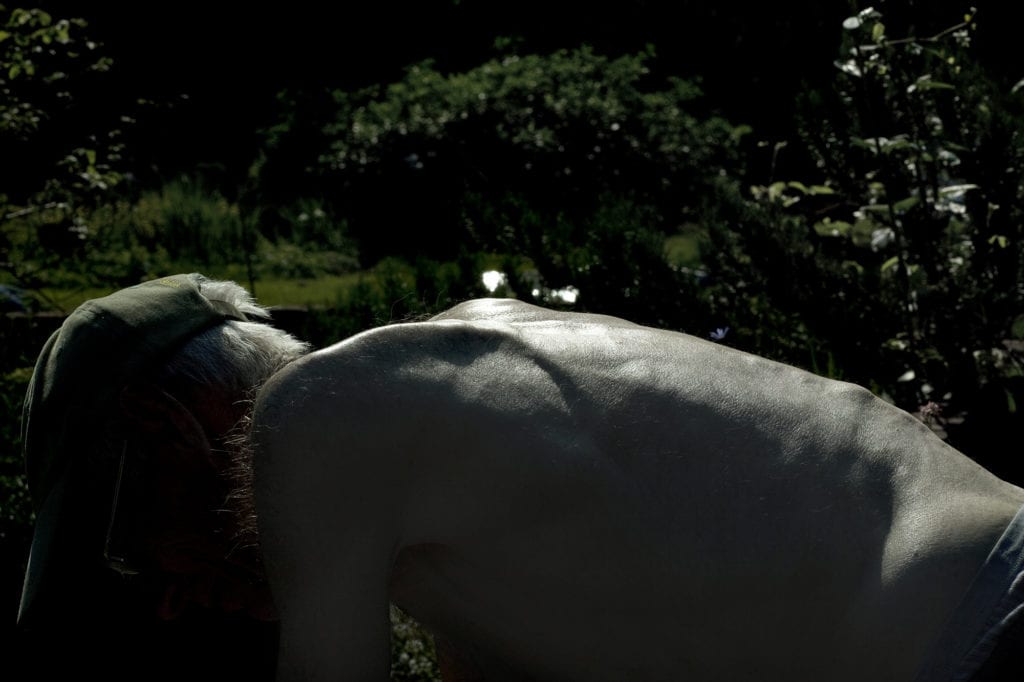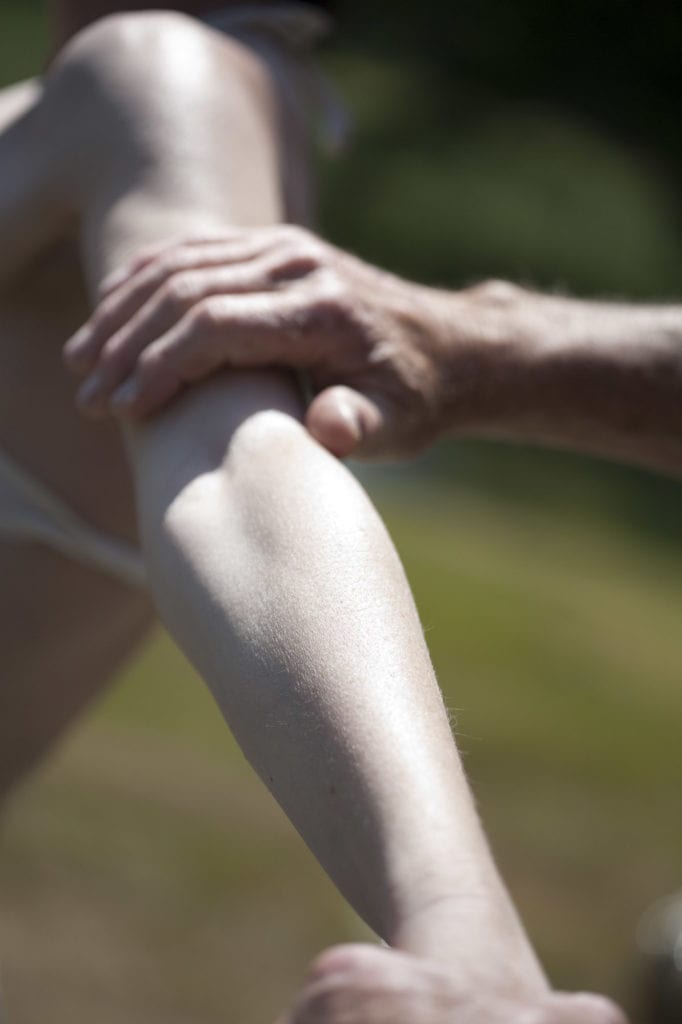“The house was absolutely full of things which were undealt with,” Léonie Hampton describes of the beginnings of her project, In the Shadow of Things. “Part of the practical task was to slowly go through room by room sorting, trying to reclaim space, to get rooms functioning again.” Hampton’s mother has Obsessive Compulsive Disorder (OCD), a mental health condition which has many different iterations and which, in her case, manifests as contamination phobia and hoarding. The photographer’s childhood home had become overrun by boxes, and she came to an arrangement with her family: that she would photograph the process of the family coming together to go through them all, dismantling and organising.
“It felt like things needed to change,” Hampton says of the origins of the project, which began in 2007. “I had a chance to go into that, to find if there was a way to change it, and so photography, and sound, or word, were very much secondary to my preliminary reason to go in, which was as a daughter.” The priority was familial support and care: Hampton’s brother was a teenager, still living in the house, and part of Hampton’s motivation was to aid her mother in creating space for him there, as well as to air out the environment more generally, both literally and metaphorically. “I was there trying to move us from a very stagnant space into something that might flow again,” she describes. That said, the very presence of the camera, and the intention to create work about that unique period of time, came to serve an important psychological role for Hampton herself. “The medium of photography allowed me to go into something which I’m very close to. The process allowed me to find some distance, and discover a visual language that hopefully expresses what I was experiencing in psychological terms.”
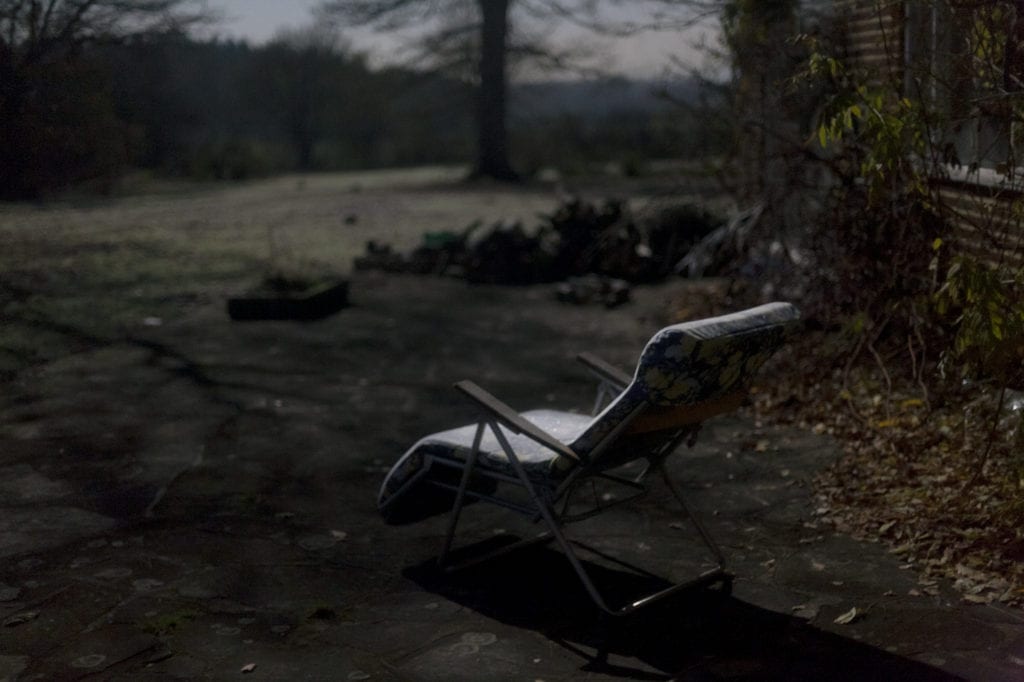
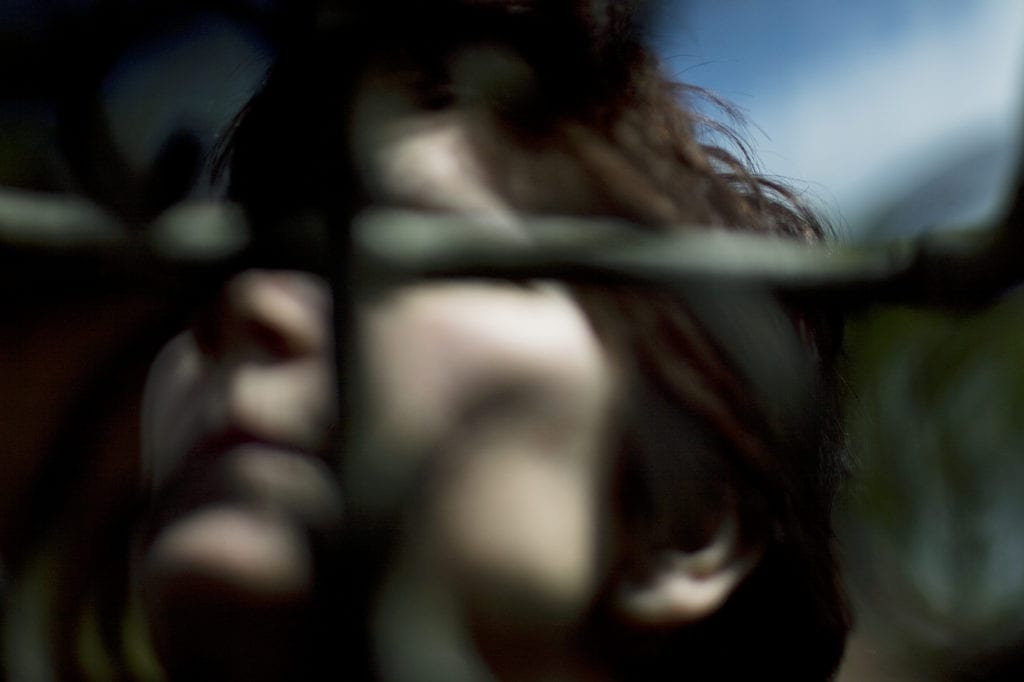
The images themselves do not describe a linear narrative, nor does any one image encapsulate the subject neatly or clearly; instead, the work serves as a visual metaphor for the nature of Hampton and her family’s shared experience throughout the period. In one picture, a lawn is covered by a patchwork of colourful skirts, dresses, and jeans, that stretch across the grass and recede into the background; this is, perhaps, the image that hints most clearly at the task Hampton found herself engaged in, of unearthing and cataloguing years worth of accrued objects.
Other pictures show a bright wood, full of bluebells, or pale sun on a garden chair. “I wanted to make a piece of work which didn’t describe, or narrate, but brought you into the feeling of that space,” Hampton explains. There is no particular authorial voice guiding the viewer, or even describing Hampton’s own feelings clearly. Hampton was working to “visually transcribe the emotional terrain” of the experience, and using the process of making images to tease out the project’s narrative as she went. “I discovered through practice, and the process of editing,” she says.
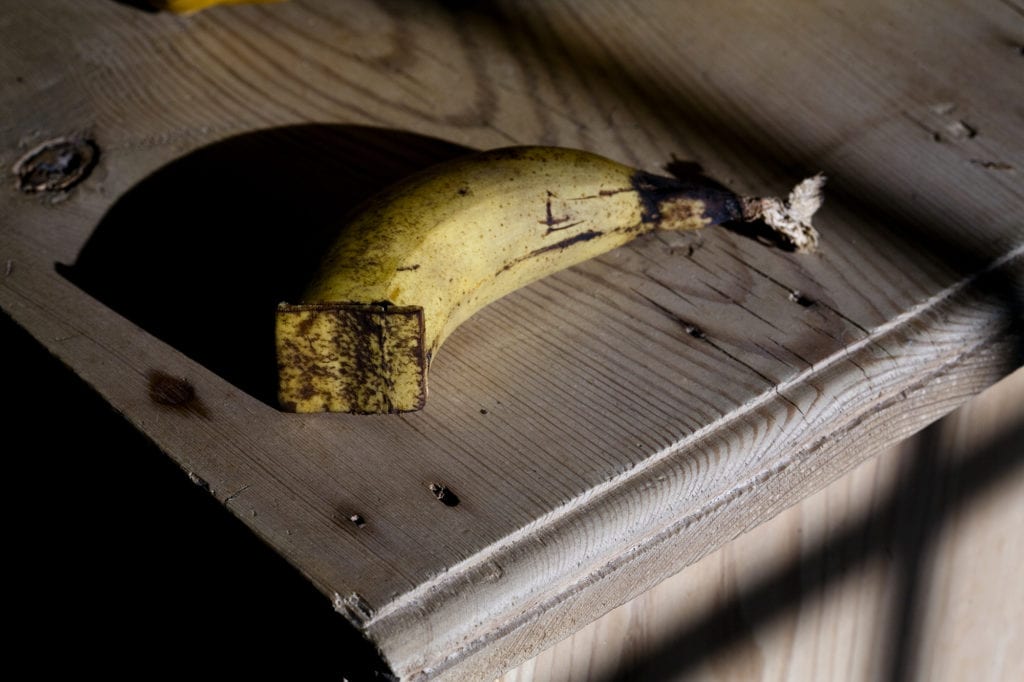
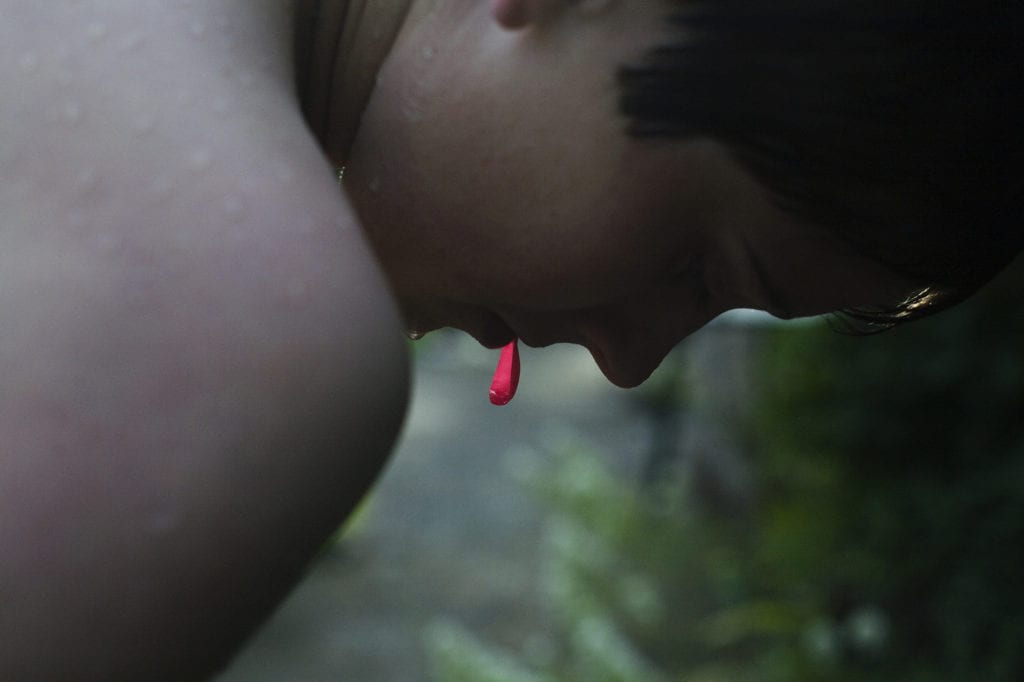
Nor do the images dwell long on Hampton’s mother, though the project explores her relationship with the photographer, and the outcomes of her obsessive collecting. “I could explore the world I was trying to talk about, and trying to change, through anything,” says Hampton. “I could explore it through landscape, through object, through animals, through water. If the work is fundamentally about my relationship with my mother and the complexity of that, then to just keep photographing my mother would be like a dead end.” Instead, the photographs show her brother in a field of flowers, or a plant standing on a table, a layered context that encircles a set of complex relationships and responses. “It would feel too binary just to stay in back and forth between her and me,” the photographer says. “I needed to explore the world that was around her home to stand a chance to create change. That’s how, as a human being, I was dealing with the task I’d set myself.” Hampton’s work exemplifies the kind of approach that addresses stigma most successfully, refusing to adopt counterproductive visual clichés. The photographic language she makes use of instead is as singular as each of the individuals it depicts.
The project also helped Hampton to explore her relationships with her family, particularly with her mother. “I definitely see the work as having helped me define the boundaries about where I start, or where my mother ends and I begin,” she says. That said, it also required a constant testing of these boundaries, given that the material of the project was so sensitive, and the relationships it depicted so close, and so tender. On one occasion, Hampton’s mother was in the garden, distressed, while Hampton and her family surrounded her, comforting her. The photographer stepped back away from the group to take a picture, and her brother turned and said, “If you take another picture, I’m going to hit you.”
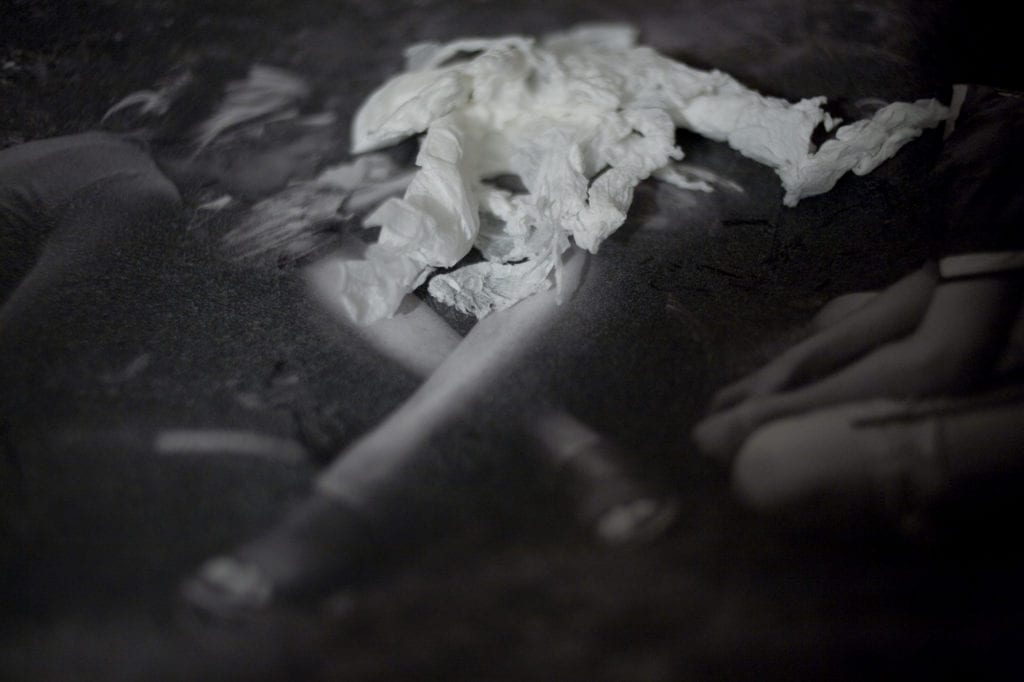
The outcome of that particular moment, though, was positive. When Hampton’s mother saw the picture, she was moved to see the love of her family so evident around her, and asked for a copy of the picture. “A lot changed after that,” says Hampton. “My brother and my sister really embraced what I was doing. They could see that my mother was accepting it.” The photographs were coming to serve as a kind of antidote to the shame and secrecy that had characterised some of the family experiences to date. “When we think back to where we were back in 2007, and how dark and difficult things were back then, and where we are now, we realise that we moved mountains,” the photographer says. The family’s relationship to the work, now finished, is paradoxical: it’s uncomfortable to look at, at times, but there’s also a deep gratitude for the record.
In the Shadow of Things resulted in a profound shift of Hampton’s own view of mental health conditions more generally. “I went in really not liking OCD, and I came out thinking ‘actually, who am I to judge?’” she says. In exploring the condition so closely, she came to reflect on the slippery nature of mental health diagnoses altogether: how is it possible to define what is an aspect of somebody’s character, and what is a symptom of an illness? “Maybe some things that we define as mental illness are the way in which society looks at it, and frames it,” Hampton suggests. “As an artist I might really accept and celebrate somebody obsessively painting a painting over and over again, but I might look at my mother and say, ‘why are you folding those towels over and over again?’ Who am I to say which one is of greater value, the folding or the painting?”
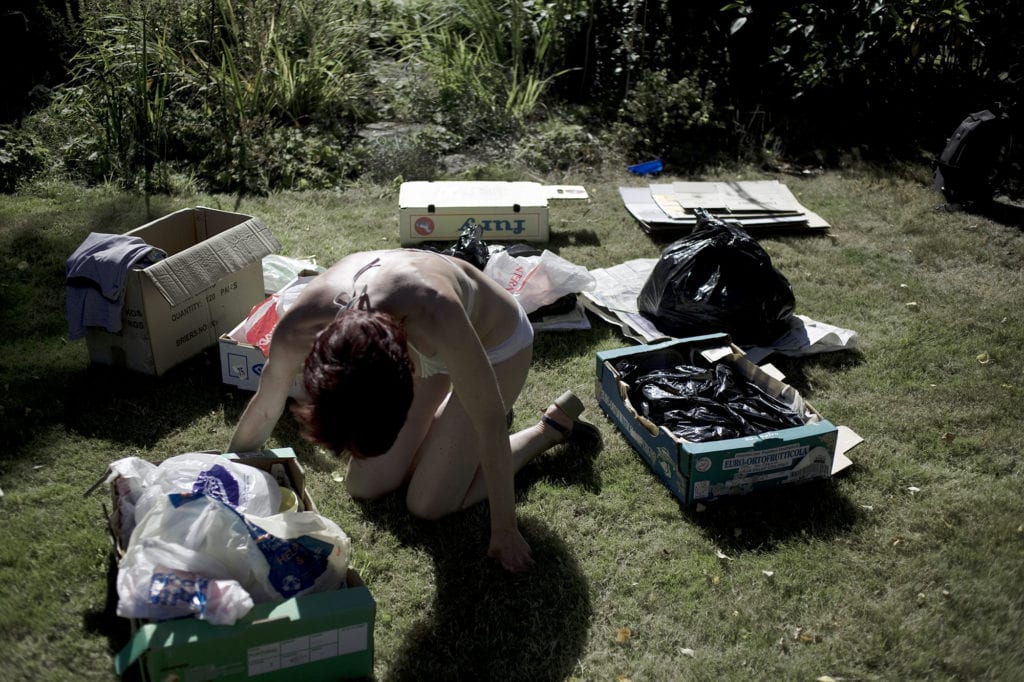
Throughout the work, Hampton’s feelings about her family narrative were transformed. “I started the project to some extent with a very naive, childish aspiration to return to what was before, and ended the work realising that that was childish,” Hampton says. “Actually much of the change that needed to happen was in my accepting that things were what they are now.”
One of the categories in this year’s Wellcome Photography Prize is ‘Mental Health’, inviting projects that explore the subject. Hampton’s work and experiences are a lesson in the potential challenges and rewards of exploring the nature of such conditions. “I’m wary of how exhausting it can be,” she cautions. “I think one also needs to be aware of what type of an emotional rollercoaster that is for you and the people involved. It’s turbulent.”
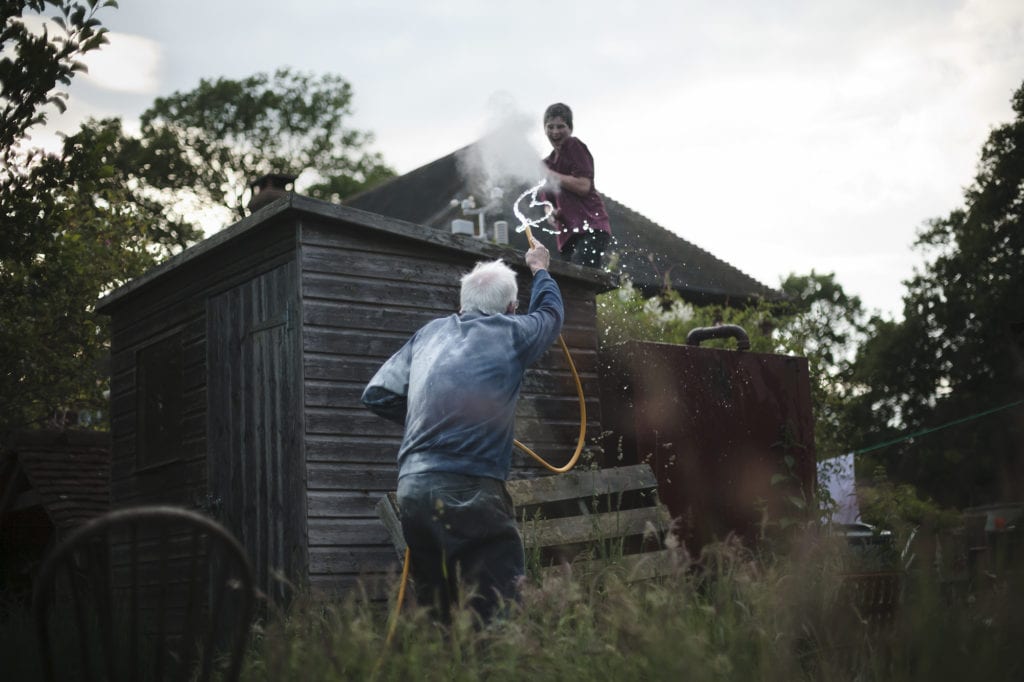
A thoroughly-realised project addressing the topic requires adequate preparation, support, and openness to a lack of certainty. “A good image of mental health has to come from a type of honesty from the person who makes it,” Hampton says. “I celebrate a level of ambiguity, too, because I think there’s so much we don’t understand, so it might be foolish to make an image which is too clear.” In the Shadow of Things adopted this kind of oblique approach: its blurred narrative reflects the nature of a mind’s interior. “I’m okay to look into an image where I can’t understand everything, because I think that is the terrain of mental illness.”
The images should be nuanced, then, but so should the perspective of the photographer, entering into the subject with a willingness to have one’s preconceptions challenged. “The other point is to be really, really sensitive and non-judgmental,” says Hampton. “And to understand that much of what we define as mental illness can often be a label that we put on people, and ways of being, that we don’t understand.” To make work that challenges the clichés and stigmas of mental health at the level of society, it must start with the possibility of change even in the mind of the photographer themselves, an interrogation of one’s own conditioning. “Some of what you’ll need to look at is your own misguided understanding,” Hampton says.
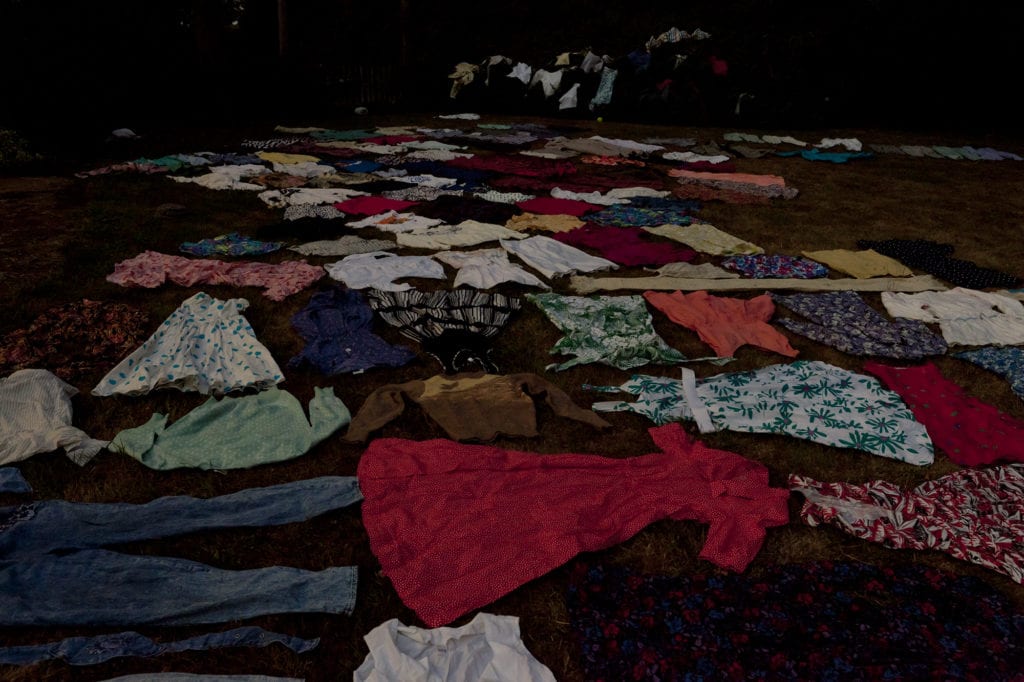
As with last year, the Wellcome Photography Prize will be judged by some of the leading professionals in the photography industry. Joining Wellcome director Jeremy Farrar will be MaryAnne Golon, director of photography at the Washington Post, and Azu Nwagbogu, founder and director of the African Artists’ Foundation. The judging panel will also include the recipient of the Wellcome Photography Prize commission, Siân Davey, a photographer with 15 years of experience working as a psychotherapist. “Mental health pervades everything and it is more crucial than ever that we understand it and give it a voice,” says Davey. “This award is significant in highlighting one of the most misunderstood and neglected territories out there.” The inclusion of this new category in the Wellcome Photography Prize will celebrate projects that explore mental health with honesty and sensitivity, inviting personal and non-judgmental explorations of its different forms.
The Wellcome Photography Prize is calling for work that will shed light on, and raise awareness about, stories of health, medicine and science. Each category winner will receive £1,250 and be featured in a London exhibition; the overall winner will receive £15,000. Entry is free and the deadline for submissions is 11:59pm GMT 16 December 2019. Please click here for more information about collaborating with Studio 1854.
